We’d been looking forward to a Saturday hike, but the weather forecast called for rain. What to do? Go hiking underground! We visited Ohio Caverns, a commercial cavern open year round offering guided underground tours. Just the thing for a rainy day.
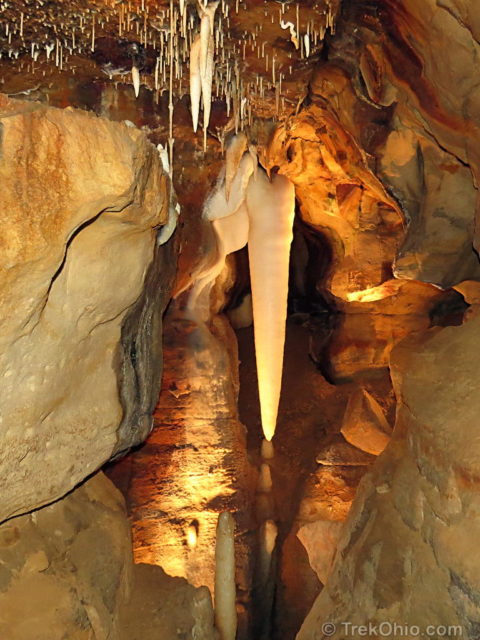
Ohio Caverns is located in Logan County in the Bellefontaine Outlier. This hilly region of Ohio contains the highest point in Ohio. Just down the road from the cavern is Campbell Hill with an elevation of 1,549 feet above sea level.
The region is also what geologists refer to as a karst region. A karst region has underlying limestone which has been dissolved in spots by eons of interaction with slightly acidic rain water. The result is sinkholes, streams that disappear underground and emerge miles away, and caverns.
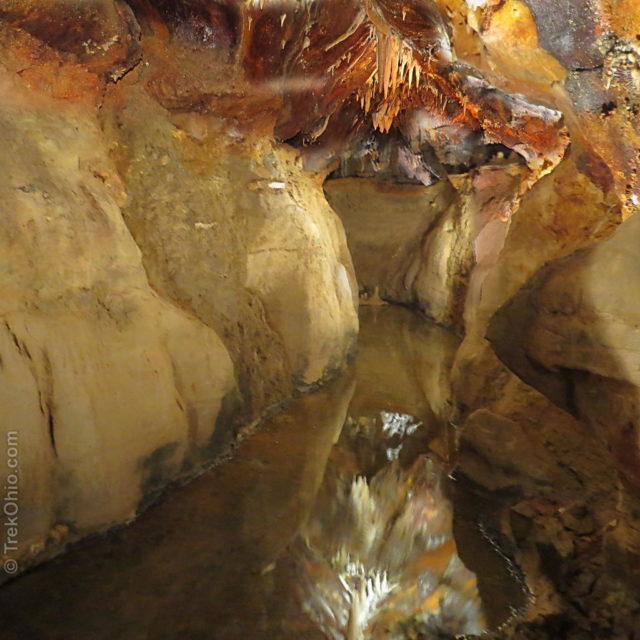
The land above the cavern was owned by a farm family in the late 1890’s. Digging in a newly formed sinkhole, they came across an entrance to the cavern. A farm hand with prior caving experience descended with an oil lamp and did some preliminary exploration. The cavern opened to paying visitors a few days later.
Since then, cave mud was cleared out to create a walking path and electric lighting was installed. Buildings housing a ticket booth, gift shop, and restrooms were added on the surface. We purchased tickets for two separate tours: the Historic Tour and the Natural Wonder Tour. A third tour: the Limestone Tour is offered for people with limited mobility.
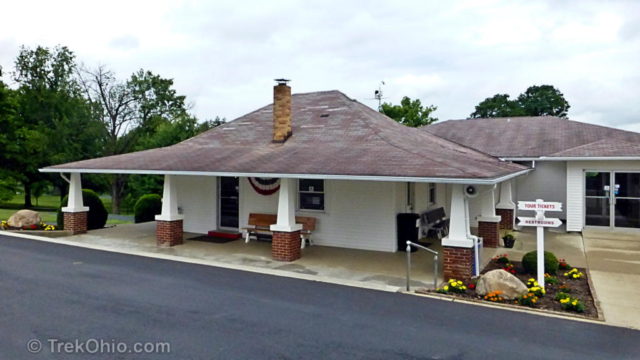
We did the Historic Tour first. A bus took us from in front of the ticket / gift shop building to a small outbuilding located at the original 1890’s cavern entrance. Our guide opened the door and we descended down into the cavern. We followed our guide for 3/4 of a mile through the caverns and emerged back at ticket / gift shop. The path was easily traversed, but there were a few spots where you had to watch your head.
This part of the tour was not especially rich in formations, though there were some toward the end. The path was twisty with numerous side passages created by long gone underground streams. The air was a cool 54 degrees and very humid. The insulating layers of rock keep the cavern temperature constant year round.
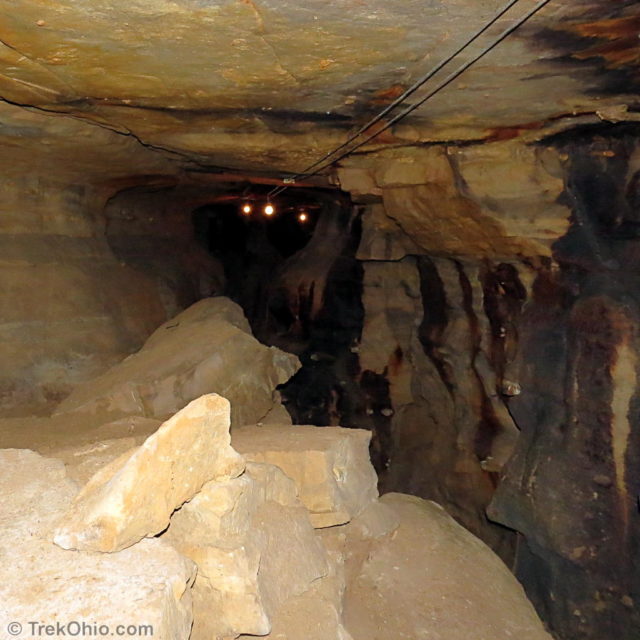
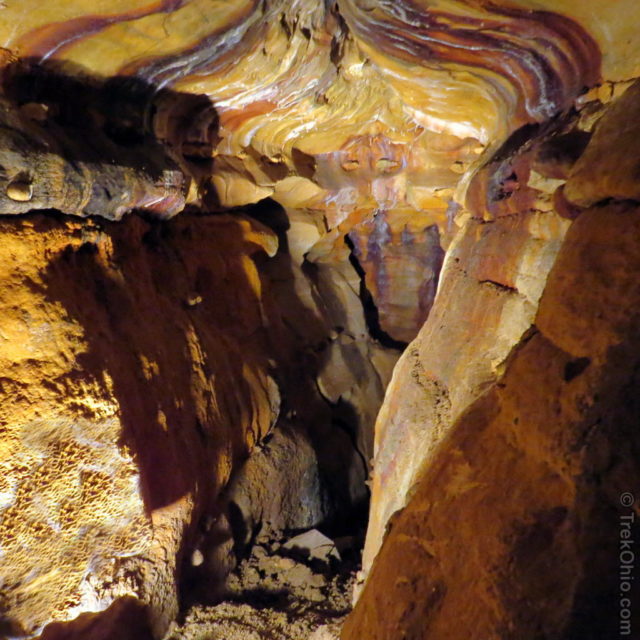
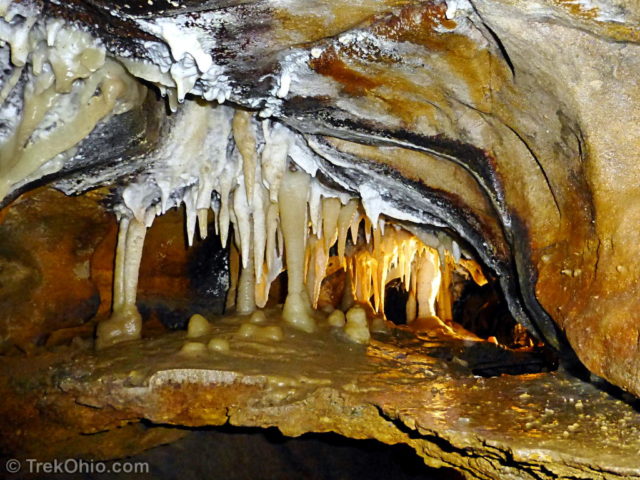
Our next tour was the Natural Wonder Tour. This began at a new entrance (handicap accessible) built in the last year, near the main buildings. A concrete walkway winds down to the base of a cliff face with a door in it. Through door and you’re in the cavern. This part of the cavern is ‘active’ – it has underground pools of water and growing cave formations.
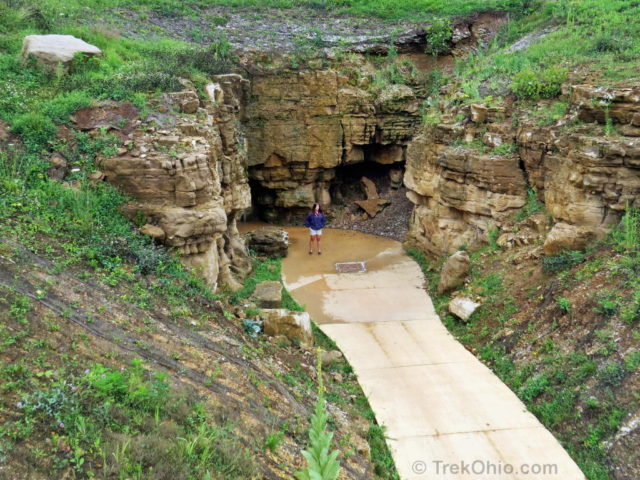
These formations form as a result of rain water filtering through cracks in the rock. Rain water contains dissolved carbon dioxide from the air producing a weak acid. This acid dissolves limestone. Where drops of water evaporates on the ceiling or floor of a cave it leaves a little of the dissolved solids behind. These solids (calcium carbonate) form cave formations. Traces of other elements (notably iron oxide) add bands of color to these formations.
As commercial caves go, Ohio Caverns is not a large one. But it has an extensive array of impressive cave formations (speleothems) in a variety of shapes, sizes, and colors. Among the formations we saw:
- Stalactites – conical formations on the cave ceiling
- Stalagmites – conical formations on the cave floor
- Columns – formed when a stalactite and stalagmite merge
- Soda Straws – hollow tubes formed by dripping water on the cave ceiling
- Draperies – sheets of stone hanging from the ceiling
- Cave Bacon – stone draperies with iron impurities that resemble bacon
- Helictites – oddly shaped stone formations on the cave walls
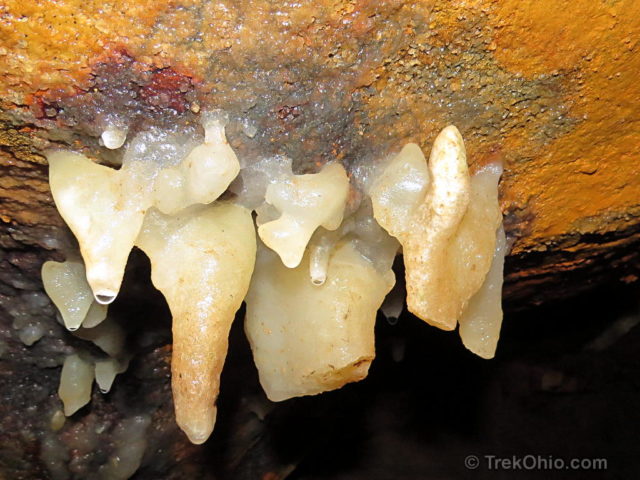
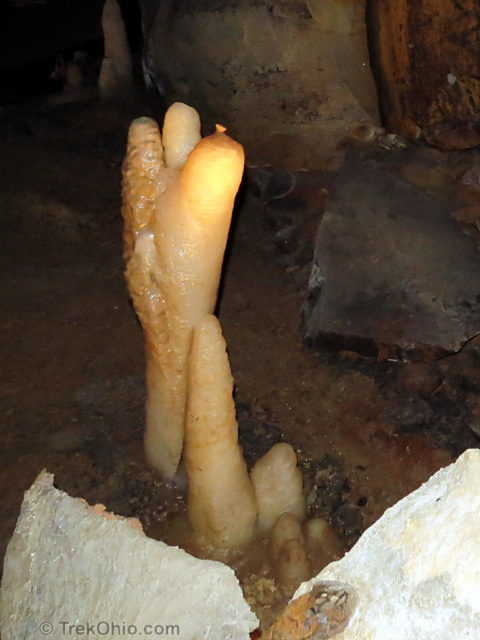
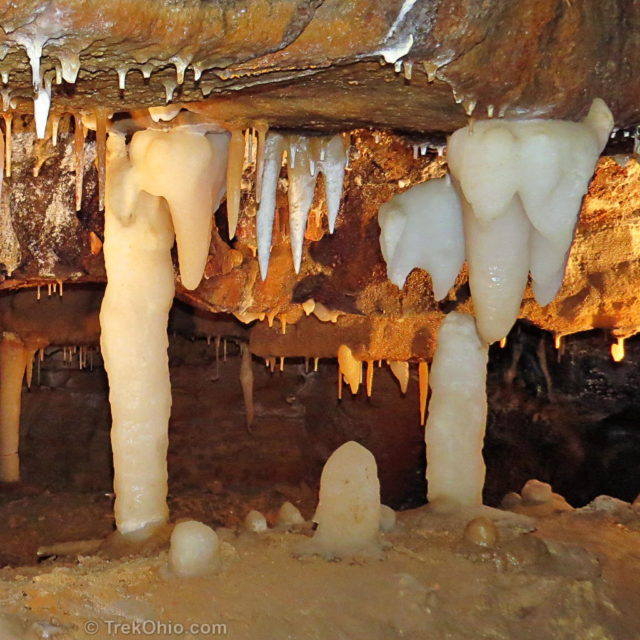
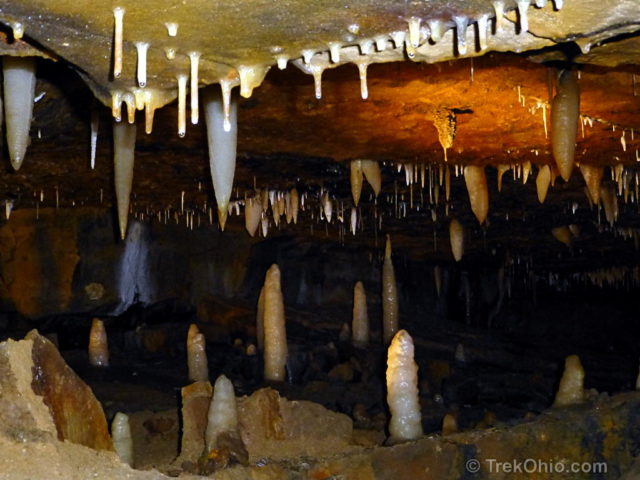
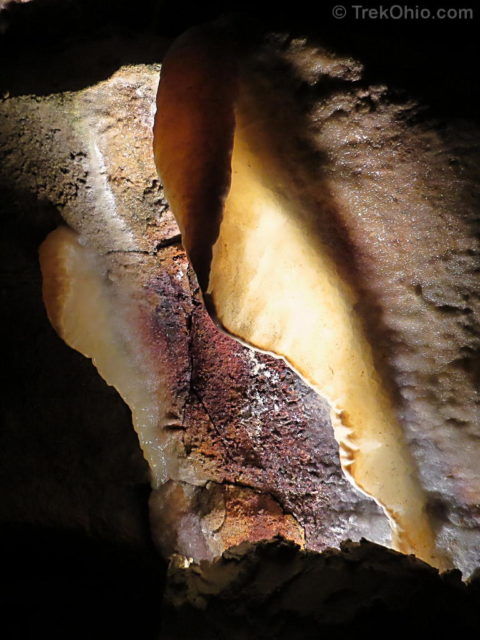
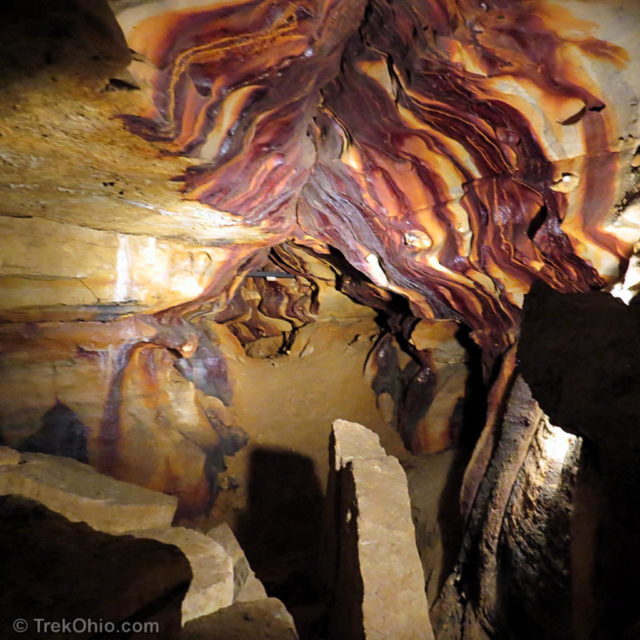
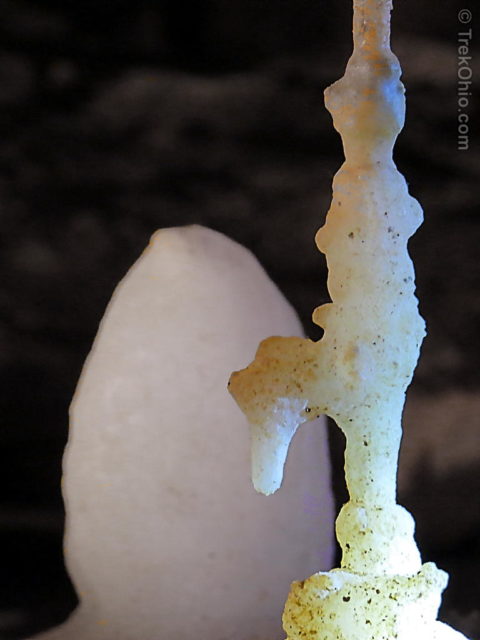
The formations ranged in size from inches to crystals larger than an adult. The larger formations have been growing for 250,000 years.
Note: simple mnemonic – STALACTITES are on the CEILING and STALAGMITES are on the GROUND.
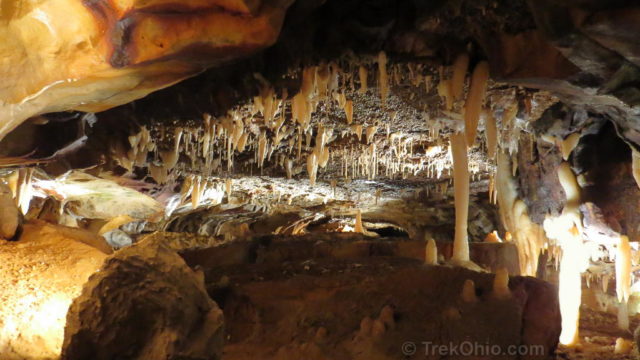
Finally, after traveling a mile through the cave, we came to a set of stairs that climbed 90 feet to another outbuilding on the surface. On the surface, it was raining heavily and just after 1 PM. Time to drive into town and get lunch.
Additional information
- TrekOhio: Logan County — This is the county where Ohio Caverns is located; check out this page for links to the official site and for information on nearby parks and preserves.
- TrekOhio: Ohio Geology in 10 Minutes or Less
- Ohio Historical Society: Bellefontaine Outlier
- ODNR: Ohio Karst Areas (PDF)
Location
Address: 2210 East State Route 245 West Liberty, Ohio 43357
More on Northwestern Ohio

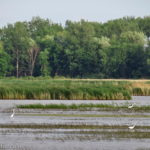
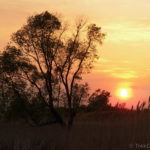
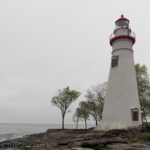
I love caves. Thanks for sharing these awesome photos!
Truly awe-some… I’ve always wanted to visit our state’s caves (to the north), and haven’t given up. Such amazing beauty!
Hi, FeyGirl! I’ve been ill and I’m just getting back on my feet again.
I didn’t even know Florida had caves; that’s interesting!
One of your beloved gators was caught in the wild in Ohio today. I’m guessing that someone decided that their pet had grown too large, so they decided to set it free. I’m sure that the coming winter would have done it in, so it’s a good thing it was caught. Here’s a photo I shared on Facebook. I think you can see it: https://www.facebook.com/Trekohio/posts/564502003605473
WOW…. How terribly sad. I can see it, and I’ve LIKED you, hee! 🙂
I am always in awe of your picture-taking ability. They are always so clear and colorful, clearly the result of somebody who knows what they are doing.
Was it a paved path throughout the cave?
Thanks, photography in the cave was challenging due to the lighting. The paths were mostly stone, paved in a few spots. Portions of the paths were wet, and just a little muddy in places on the historic tour. Also, Zane Shawnee Caverns is nearby. We didn’t get a chance to visit these caverns – perhaps another day.
Bob, thank your for your kind words about our photos. I usually touch up our photos using Gimp before I publish them. Typical edits involve me fussing with the white balance, sharpening the focus, bringing details out of the shadows, and cropping for better composition. As to my own photographs, I am oh-so-slowly reading the lengthy and boring manual that came with my camera. It’s painful to read, but here and there I am learning about handy features that my camera has, so maybe I’ll be able to better exploit these features in the future.
Never heard of cave bacon before…sounds like a cool place!
Essentially stone drapery colored with iron oxide (rust) bands. I had a light breakfast that day and it was making me hungry!